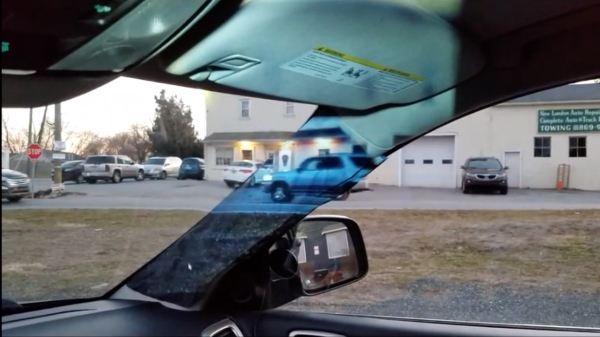[Mashable reports on a 14-year-old’s clever invention that uses presence to improve auto safety by removing drivers’ blind spots; see the original version of the story for 2 short videos. More information is available from a press release via PR Newswire. –Matthew]

Teen girl invents simple, yet innovative way to remove blind spots in cars
By Sasha Lekach
October 31, 2019
I’ll admit it: I’ve had a pedestrian enter the crosswalk without me immediately noticing because they were blocked by the right side of my car. But what if your car frame didn’t block your line of sight while driving?
That’s what 14-year-old Alaina Gassler looked into for her invention at the Broadcom MASTERS (Math, Applied Science, Technology, and Engineering for Rising Stars) competition for middle schoolers from the Society for Science and the Public this week. She came up with a project called, “Improving Automobile Safety by Removing Blind Spots.”
She built a prototype system with a webcam, projector, and 3D-printed materials to fill in the space the car frame blocks from drivers. No more missing information. Simple, yet elegant.
The idea earned the West Grove, Pennsylvania, teen the top place in the nationwide competition with the $25,000 Samueli Foundation Prize in honor of overall STEM excellence.
She mounted the webcam outside the passenger side A-pillar on a car and then displayed the live video on the inside pillar from a projector attached to the sunroof above the driver’s seat. She even had to print a special part to help focus the projector at such close range. She then faced issues with projecting the image on the interior frame. So she resurfaced it with retro reflective fabric.
As she explained it in an email, the material “only reflects light back to the light source, which is the projector in this case. Since the driver’s eyes are next to the projector, the driver can see a crisp, clear image, and the passengers only see a black piece of fabric.”
She said she noticed the problem with her solution when sitting in seats other than the driver side. The image was just blurred, moving lights for everyone but the driver. “During testing when I sat in the passenger seat of the car and the moving light from the projector gave me a headache,” she said. The new material solved that.
Blind spot detection is becoming a norm in cars, known as a Blind Spot Information System. In newer cars a light, noise, or vibration warns drivers when a vehicle or object is in your blind spot, usually with a warning on side mirrors. Sensors instead of cameras (like in Alaina’s idea) pick up information for drivers to know when something is in the way even if they can’t see it.
Here [in the original story and via YouTube] is more about Alaina and her prize-wining idea. Maybe we’ll see something like this in future cars.
Leave a Reply